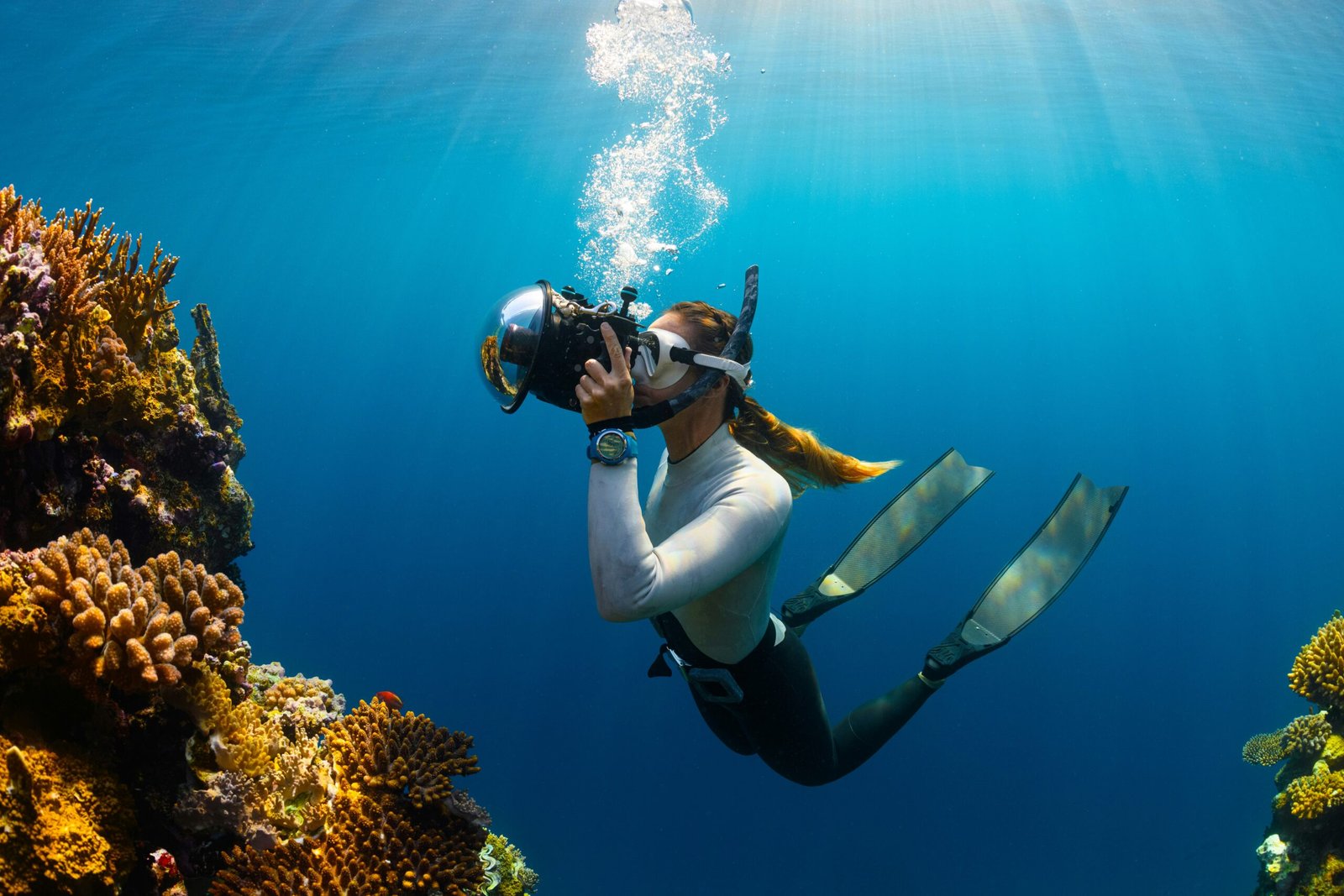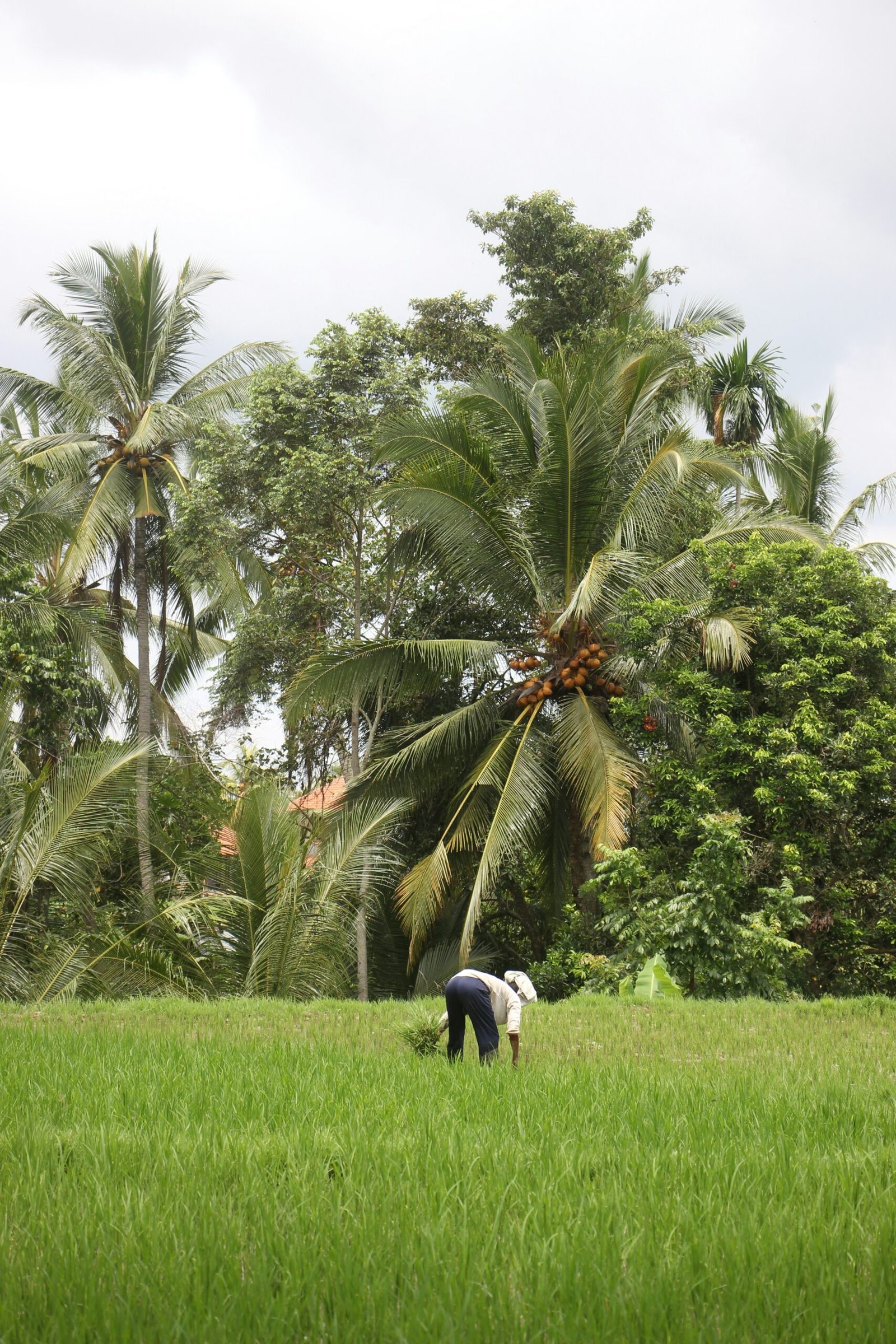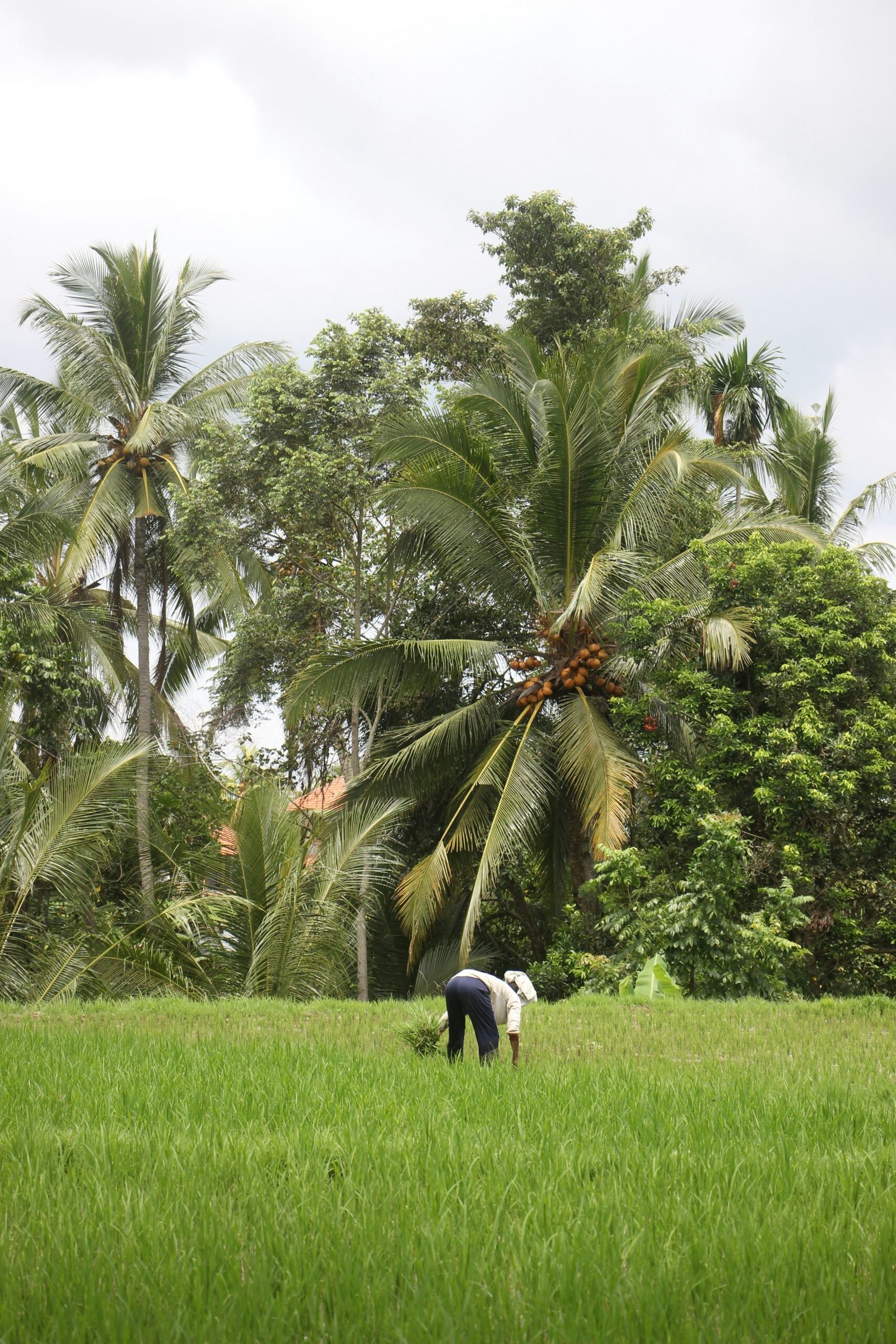Introduction to Scuba Diving Micro-Destinations
Scuba diving micro-destinations refer to unique underwater locations that are often overlooked in favor of more popular dive sites. These micro-destinations typically showcase extraordinary marine life, vibrant coral reefs, and unspoiled underwater environments, which makes them ideal for divers seeking an authentic experience away from the bustling crowds. Some characteristics that define these destinations include their remote geographical locations, limited accessibility, and a consistently lower influx of tourists, all contributing to their appeal.
The allure of scuba diving micro-destinations lies in the opportunity to connect with nature in its purest form. With fewer divers in the water, these sites present a more serene and tranquil atmosphere. This can lead to enhanced interactions with local wildlife, as marine creatures are generally less accustomed to human presence. Divers who prefer these less-traveled routes often return with unforgettable memories and photographs of unique marine encounters that are simply not possible on more commercial dive excursions.
Moreover, the lower tourist footprint associated with micro-destinations tends to have a positive impact on the underwater ecosystems. Many popular diving locations suffer from overcrowding, which can lead to reef damage and disrupted marine habitats. In contrast, micro-destinations generally have healthier waters, thriving ecosystems, and are often subject to more sustainable tourism practices. This dynamic allows divers to engage in marine conservation efforts while enjoying the beauty of the underwater world.
In addition to ecological benefits, exploring these lesser-known locations invites divers to discover diverse cultures, traditions, and communities that are often overshadowed by more famous resorts. This deeper engagement can enhance one’s understanding and appreciation of the region, ultimately leading to a more fulfilling diving experience. As the world of scuba diving continues to expand, these hidden gems provide a perfect avenue for divers looking to uncover the treasures of the sea without the distractions of mass tourism.
The Importance of Sustainable Diving
As the popularity of scuba diving grows, so does the pressing need for sustainable diving practices, particularly in lesser-known micro-destinations. These areas, often overlooked by mainstream tourism, host delicate and pristine marine ecosystems that deserve protection. The rise of mass tourism has far-reaching effects on these environments, often leading to significant degradation of coral reefs, the displacement of marine life, and deterioration of local habitats. Sustainable diving practices become imperative to mitigate these impacts and preserve the natural beauty of these locations.
Responsible diving is not just about respecting the marine environment during exploration. It is about understanding the broader implications of our actions. Divers should prioritize environmental awareness, ensuring that their activities leave no trace. This includes adhering to established guidelines on wildlife interaction, avoiding contact with underwater structures, and being mindful of buoyancy to prevent unintentional damage to sensitive ecosystems. By adopting disciplined diving habits, divers can significantly diminish their footprint in these fragile underwater worlds.
Furthermore, engaging in sustainable practices promotes the long-term viability of micro-destinations. Many of these locations rely on the health of their marine environments to sustain local economies dependent on tourism. By becoming advocates for responsible diving, divers can help support community initiatives focused on conservation, thus fostering a harmonious relationship between tourism and marine preservation. Educating oneself and others about local ecology enhances the diving experience and ensures that these hidden gems can be shared with future generations.
In conclusion, embracing sustainable diving practices is essential for maintaining the integrity of micro-destinations. Protecting these fragile ecosystems not only enriches the experience for divers but also underscores our collective responsibility to safeguard the planet’s natural treasures. Through mindful exploration, we can ensure that these underwater sanctuaries continue to thrive amidst a growing wave of tourism.
Top Micro-Destinations for Scuba Diving Enthusiasts
Scuba diving offers remarkable opportunities to explore the underwater world, and discovering hidden gems can greatly enhance this experience. Below is a curated list of top micro-destinations that promise thrilling dives without the overwhelming crowds typically found in more popular locations.
The first highlight is the Solomon Islands, a remote archipelago in the South Pacific. Known for its pristine coral reefs and diverse marine ecosystems, the Solomon Islands offer an unspoiled paradise for divers. The warm waters provide a home to vibrant coral formations, WWII wrecks, and a plethora of fish species. The best time to dive here is during the dry season from May to October, ensuring optimal visibility and conditions.
Next on the list is Amed, located on the eastern coast of Bali, Indonesia. Amed is a quaint fishing village known for its black sand beaches and tranquil atmosphere. Divers can explore the vibrant coral gardens, unique underwater landscapes, and abundant marine life, including turtles and colorful reef fish. Amed sees fewer tourists than other parts of Bali, making it an ideal destination for a more intimate diving experience.
For those seeking a unique diving adventure, consider the coast of Madagascar. The Nosy Be archipelago boasts diverse dive sites, including volcanic underwater structures and tropical fish habitats. Its relatively low tourist footprint allows divers to immerse themselves in an untouched marine environment, with the best time to visit being from April to December when marine visibility is at its peak.
Lastly, the Îles de la Madeleine in Canada offers a distinctive diving experience with its cold-water dives. Renowned for its kelp forests and significant marine biodiversity, this area attracts fewer tourists and provides a chance to observe unique cold-water species. The ideal time for diving is during the summer months when water temperatures are more manageable.
These micro-destinations provide truly exceptional scuba diving experiences that are off the beaten path, highlighting the beauty of nature while ensuring divers enjoy a sense of solitude amidst breathtaking underwater scenery.
Getting There: Accessing Micro-Destinations
Accessing scuba diving micro-destinations often requires careful planning and consideration of various transportation options. Depending on the specific location, travelers may need to combine different modes of transport to reach their ultimate destination. For many remote diving spots, flights to the nearest major city are often the first step. From there, regional airlines or charter flights can provide direct access to smaller airports or even islands that are home to hidden diving gems.
For instance, in areas where roads are minimal or non-existent, boat travel becomes paramount. Local ferries or private boat rentals can efficiently transport divers to secluded dive sites that are not reachable by land. On the other hand, some destinations may require a longer journey over land, necessitating the use of rental cars, buses, or local taxis for transport to diving hubs.
Accommodations at these micro-destinations vary widely, ranging from eco-lodges and bed-and-breakfast establishments to luxury resorts. It is often a good idea to book ahead, especially during peak diving seasons, to secure your desired lodging. Many accommodations cater specifically to divers, offering convenient access to dive shops, educational resources, and guided excursion services.
Divers should take note of any necessary permits or local regulations that may apply to their chosen micro-destination. Some areas may have restrictions on divers, focusing on environmental conservation and safety. It is advisable to check with local authorities or dive operators for an understanding of these requirements. Familiarizing oneself with the local laws not only reinforces responsible diving practices but enhances the overall experience.
In conclusion, careful planning and awareness of transport, accommodation options, and regulatory requirements will facilitate successful trips to scuba diving micro-destinations, allowing divers to enjoy these unique underwater experiences responsibly.
Essential Gear for Diving in Remote Locations
When exploring the enchanting underwater environments of micro-destinations, having the right scuba diving gear is paramount. Given the often limited accessibility to rental services in remote locations, divers must be proactive in curating a comprehensive gear kit that balances safety, efficiency, and packing light. The following equipment is fundamental for those venturing into less-traveled waters.
First and foremost, a reliable scuba diving regulator is essential. A high-performance regulator ensures a consistent air supply, allowing divers to focus on the stunning marine life around them without concerns about equipment failure. Compact and lightweight options are available that make transportation easier while still prioritizing reliability. Additionally, a buoyancy control device (BCD) is crucial for managing the diver’s ascent and descent. A well-fitted BCD also provides important storage for other essential gear.
Wetsuits or drysuits, depending on the water temperature, are another vital component. Lightweight options can be advantageous in tropical micro-destinations, maximizing comfort without adding bulk to your luggage. It is also advisable to include a dive computer, which provides real-time data on depth, time underwater, and decompression status, promoting safety in unknown waters.
Moreover, underwater cameras or GoPro devices enable divers to document their experiences, although ensuring these items fit well within a lightweight strategy is important. Safety equipment, such as a whistle, signaling devices, and a dive knife, should also be included to prepare for emergent situations. By carefully selecting gear that is both functional and light, divers can enhance their experience while ensuring they are well-prepared for any adventure in remote diving locations.
Unexpected Encounters: Marine Life in Hidden Dive Spots
Diving in lesser-known destinations reveals a diverse and vibrant marine ecosystem that often remains untouched by heavy tourism. These hidden gems are not just about picturesque views; they also offer unique encounters with marine life that can leave a lasting impression on divers. In locations that experience low human impact, the natural balance of the underwater realm thrives, allowing for an array of species to flourish.
Among the enchanting dwellers of these hidden dive spots is the elusive seahorse. Often found in shallow seagrass beds, these delicate creatures prefer habitats with ample vegetation, which provide both protection and sustenance. Observing a seahorse expertly camouflage itself among the corals is a breathtaking reminder of the wonders of the ocean. Another remarkable sight is the majestic Manta Ray, which can be spotted gliding gracefully through the waters in places like the remote islands of Raja Ampat, where the lack of fishing pressures ensures their population remains robust.
Beyond the larger species, hidden dive locations often reveal colorful macro life, including nudibranchs that showcase an extraordinary spectrum of colors and patterns. These fascinating creatures are frequently missed in popular dive spots due to the focus on larger marine animals. Divers often recount stories of serendipitous discoveries, such as stumbling upon a vibrant coral garden teeming with life or encountering a friendly turtle that seems just as curious about them as they are about the turtle. Personal accounts from seasoned divers highlight the thrill of witnessing these interactions in tranquil settings where the underwater world unfolds in its purest form.
As divers venture into these off-the-beaten-path regions, they not only enjoy the thrill of encountering species less commonly seen but also contribute to the conservation of these vital ecosystems. Exploring micro-destinations not only ensures unforgettable experiences but also aids in protecting the delicate balance of marine life for future generations.
Local Cultures and Communities: Engaging Beyond the Dive
Scuba diving offers adventurers the chance to explore vibrant underwater ecosystems; however, engaging with the local cultures and communities surrounding micro-destinations is equally vital. Many scuba diving spots are situated near small towns or villages, where the opportunity for cultural exchange is abundant. By interacting with local populations, divers can gain insights into traditional practices, customs, and possibly even the stories that shape these unique locales.
Respecting the traditions and lifestyles of local communities is crucial. It is important for divers to approach these communities with an open mind and a willingness to learn. This interaction fosters mutual understanding and appreciation, which can be highly beneficial for sustaining cultural heritage. When divers take the time to understand local customs and norms, they are less likely to inadvertently disrespect these communities. This respect can also lead to enriching experiences beyond the diving excursions, such as participating in local festivals, enjoying authentic cuisine, or attending workshops that showcase traditional crafts.
Moreover, divers have the potential to contribute positively to the economies and ecosystems of these regions. By choosing locally-owned dive shops, accommodations, and restaurants, divers can help ensure that their spending supports the community directly. This approach encourages responsible tourism and promotes sustainable practices, ensuring that both the aquatic and terrestrial environments remain intact for future generations to enjoy. Additionally, divers can engage in initiatives aimed at marine conservation, such as beach clean-ups and coral restoration projects, further solidifying their commitment to supporting local ecosystems.
By appreciating and nurturing relationships with local cultures, scuba divers can create lasting impacts that extend far beyond the dive itself. This engagement not only enhances their own experience but also reinforces the importance of preserving both cultural and ecological integrity in these lesser-known destinations.
Overcoming Challenges: Diving in Less-Trodden Waters
Diving in less-trodden waters presents an array of challenges that can deter even the most enthusiastic divers. One of the primary issues is the unpredictability of water conditions. In micro-destinations, divers may encounter varying currents, visibility, and temperatures that differ significantly from more popular dive sites. To effectively prepare for these conditions, divers should conduct thorough research ahead of time, utilizing local diving forums or connecting with experienced divers who have explored those waters. It is also beneficial to familiarize oneself with critical weather patterns and seasonal changes that may impact dive conditions.
Lack of infrastructure is another hurdle divers might face in remote locations. Often, these destinations lack established dive shops, safety equipment, or medical facilities, which can raise concerns about safety. Prior to embarking on an adventure, divers should ensure they have the necessary equipment and a solid emergency plan in place. It is advisable to travel with a buddy system, ensuring that someone is always ready to assist in case of an emergency. Additionally, obtaining comprehensive dive insurance can provide peace of mind, as it covers potential medical emergencies that might arise when diving in less accessible areas.
Connecting with local guides can significantly enhance the safety and enjoyment of the diving experience. Local knowledge is invaluable, as guides are familiar with both the marine environment and potential hazards. They can provide insights on the best dive spots and help navigate any unforeseen challenges during excursions. In essence, while diving in less-trodden waters may present certain difficulties, thorough preparation, awareness of local conditions, and leveraging local expertise can lead to a rewarding adventure. Taking these precautions will help ensure a safe and enjoyable diving experience that reveals the hidden gems of our oceans.
Conclusion
In recent years, the fascination with scuba diving has evolved, with divers increasingly seeking micro-destinations that offer a unique combination of vibrant marine life and cultural richness while maintaining a low tourist footprint. Choosing to dive in these lesser-known locations not only enhances the diving experience but also promotes environmental sustainability. As many popular diving spots become overcrowded, the subtle beauty of micro-destinations provides an alternative that allows divers to explore untouched ecosystems and engage with local cultures.
Moreover, the benefits of scuba diving in micro-destinations extend beyond the individual diver’s experience. These locations often rely on tourism for their economies, creating incentives for local communities to protect their marine environments. By visiting these hidden gems, divers contribute to conservation efforts, ensuring that delicate ecosystems are preserved for future generations. The focus on sustainable tourism helps to reduce environmental degradation, allowing divers to enjoy the beauty of the underwater world without contributing to the decline of these precious habitats.
Furthermore, diving in micro-destinations promotes cultural appreciation and understanding. These locales typically showcase authentic practices and traditions, giving divers the chance to immerse themselves in the local way of life. Engaging with communities in such settings fosters respect for diverse cultures and enhances the overall travel experience. By stepping away from the typical crowded dive sites and venturing into these unique locations, divers can embark on meaningful adventures that enrich their understanding of the world.
Ultimately, selecting micro-destinations for your next scuba diving adventure not only promises an unforgettable experience but also aligns with values of environmental stewardship and cultural sensitivity. Embracing these hidden gems allows divers to explore the wonders of the ocean while becoming advocates for the preservation of fragile ecosystems. Therefore, as you plan your next dive, consider the myriad benefits that come with choosing less conventional, low-impact sites.




